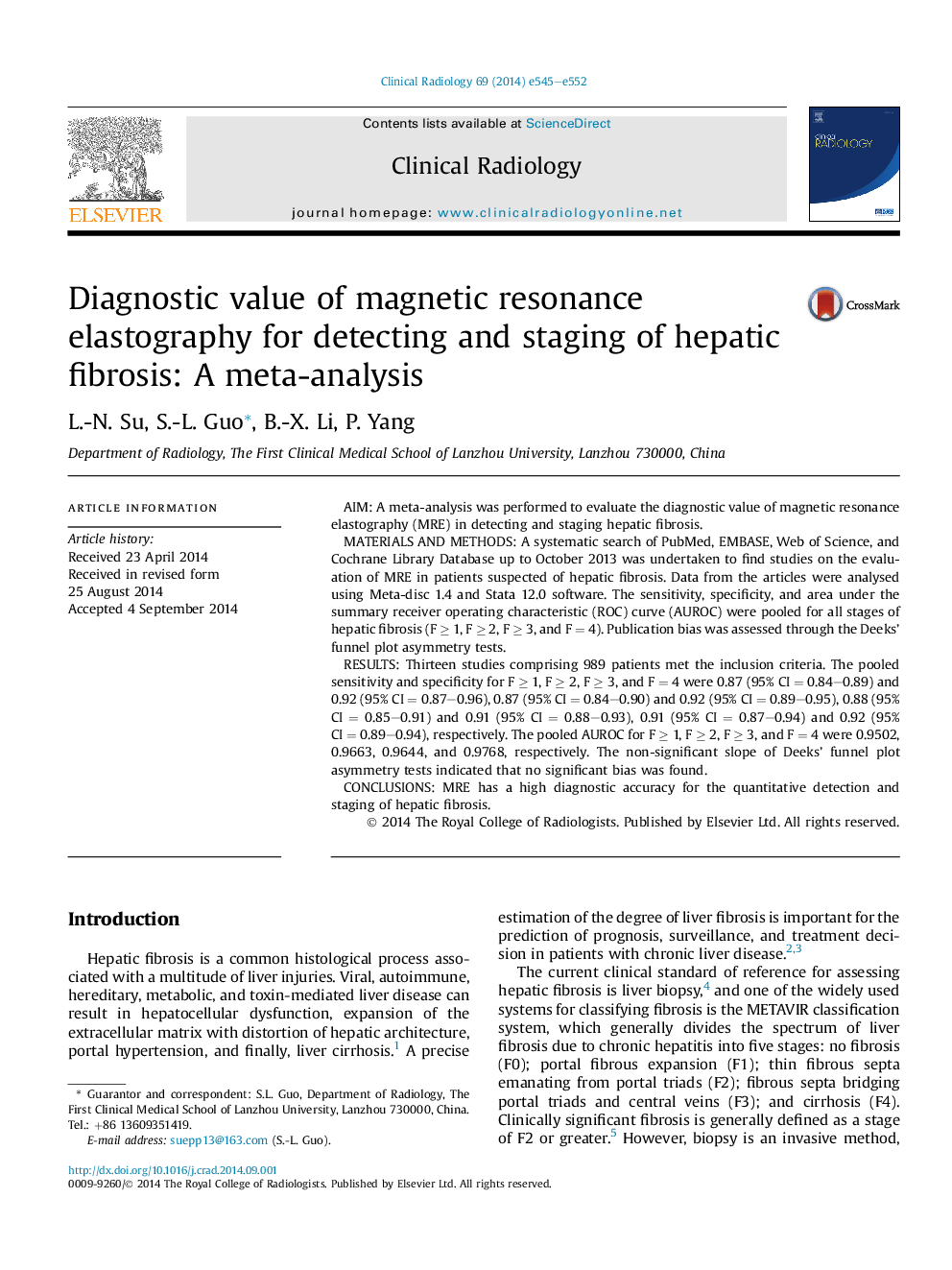| Article ID | Journal | Published Year | Pages | File Type |
|---|---|---|---|---|
| 3981668 | Clinical Radiology | 2014 | 8 Pages |
•MRE has a high diagnostic accuracy for detection and staging of hepatic fibrosis.•Quantification of stiffness cut-off values can help diagnose and monitor hepatic fibrosis.•MRE potentially eliminates the need for liver biopsies.
AimA meta-analysis was performed to evaluate the diagnostic value of magnetic resonance elastography (MRE) in detecting and staging hepatic fibrosis.Materials and methodsA systematic search of PubMed, EMBASE, Web of Science, and Cochrane Library Database up to October 2013 was undertaken to find studies on the evaluation of MRE in patients suspected of hepatic fibrosis. Data from the articles were analysed using Meta-disc 1.4 and Stata 12.0 software. The sensitivity, specificity, and area under the summary receiver operating characteristic (ROC) curve (AUROC) were pooled for all stages of hepatic fibrosis (F ≥ 1, F ≥ 2, F ≥ 3, and F = 4). Publication bias was assessed through the Deeks' funnel plot asymmetry tests.ResultsThirteen studies comprising 989 patients met the inclusion criteria. The pooled sensitivity and specificity for F ≥ 1, F ≥ 2, F ≥ 3, and F = 4 were 0.87 (95% CI = 0.84–0.89) and 0.92 (95% CI = 0.87–0.96), 0.87 (95% CI = 0.84–0.90) and 0.92 (95% CI = 0.89–0.95), 0.88 (95% CI = 0.85–0.91) and 0.91 (95% CI = 0.88–0.93), 0.91 (95% CI = 0.87–0.94) and 0.92 (95% CI = 0.89–0.94), respectively. The pooled AUROC for F ≥ 1, F ≥ 2, F ≥ 3, and F = 4 were 0.9502, 0.9663, 0.9644, and 0.9768, respectively. The non-significant slope of Deeks' funnel plot asymmetry tests indicated that no significant bias was found.ConclusionsMRE has a high diagnostic accuracy for the quantitative detection and staging of hepatic fibrosis.
